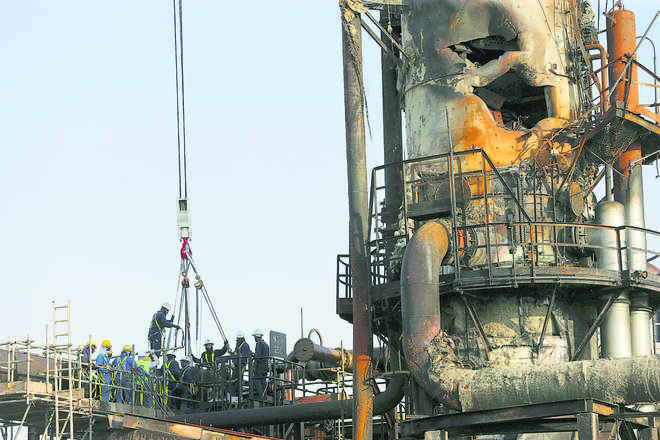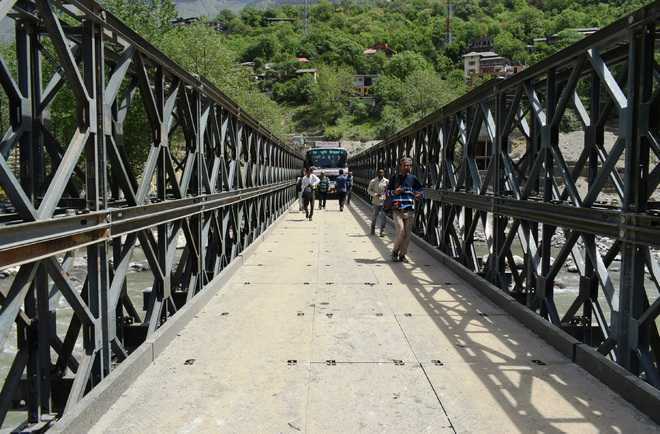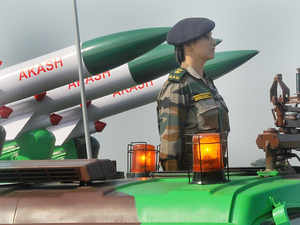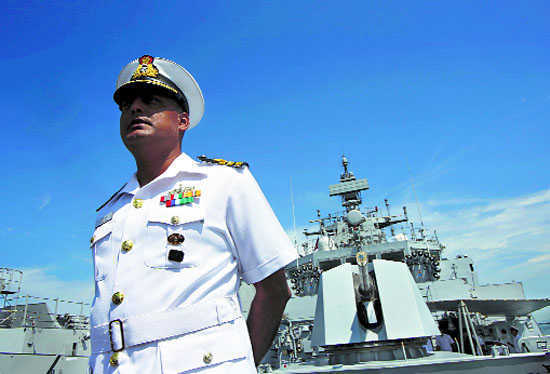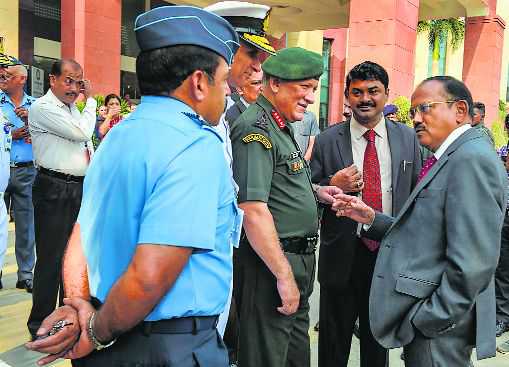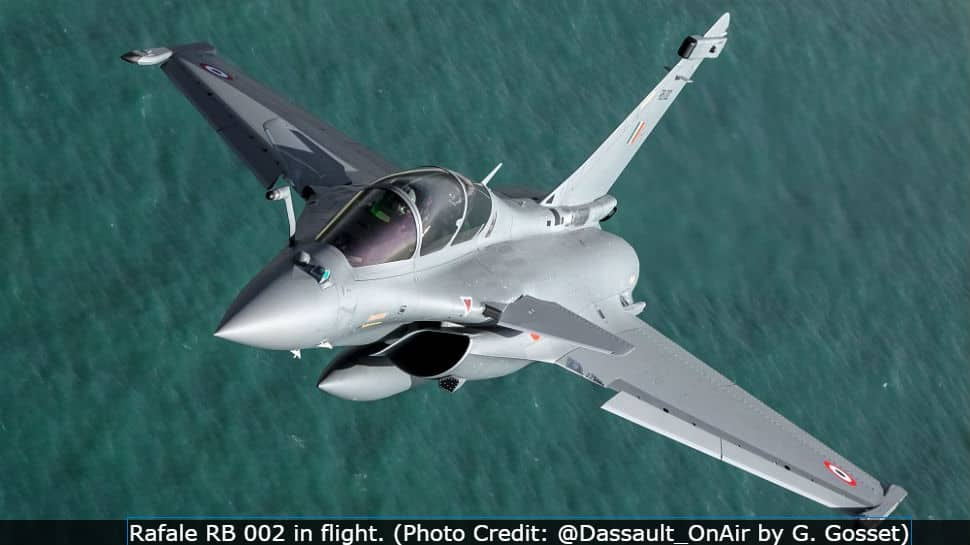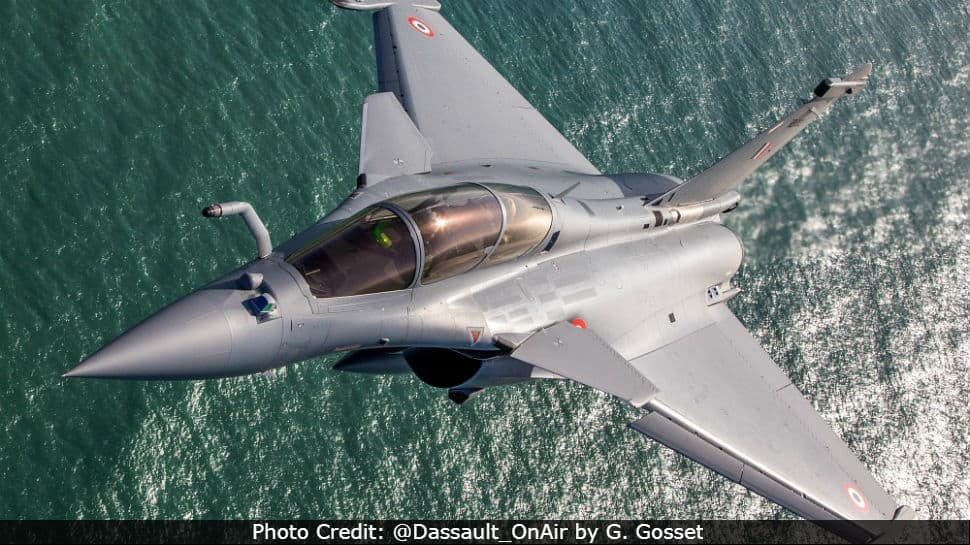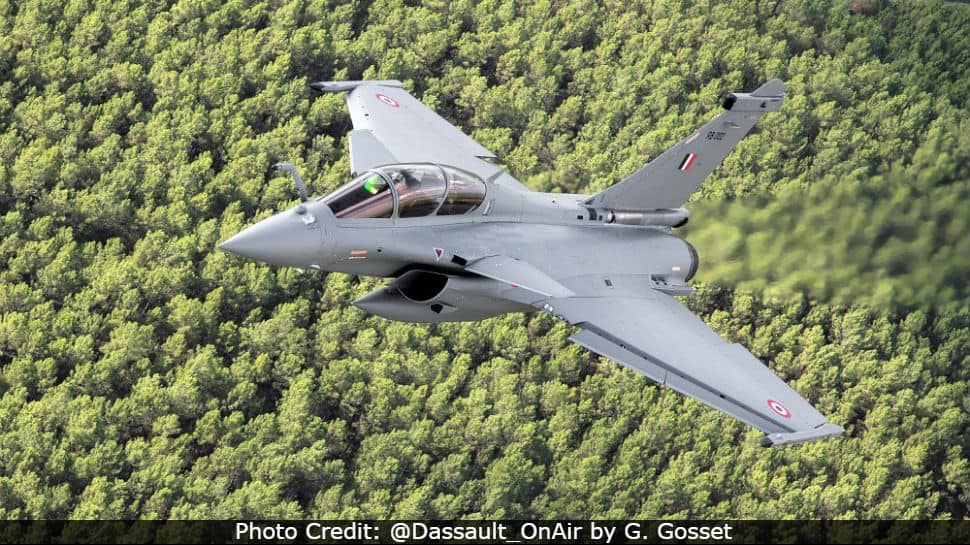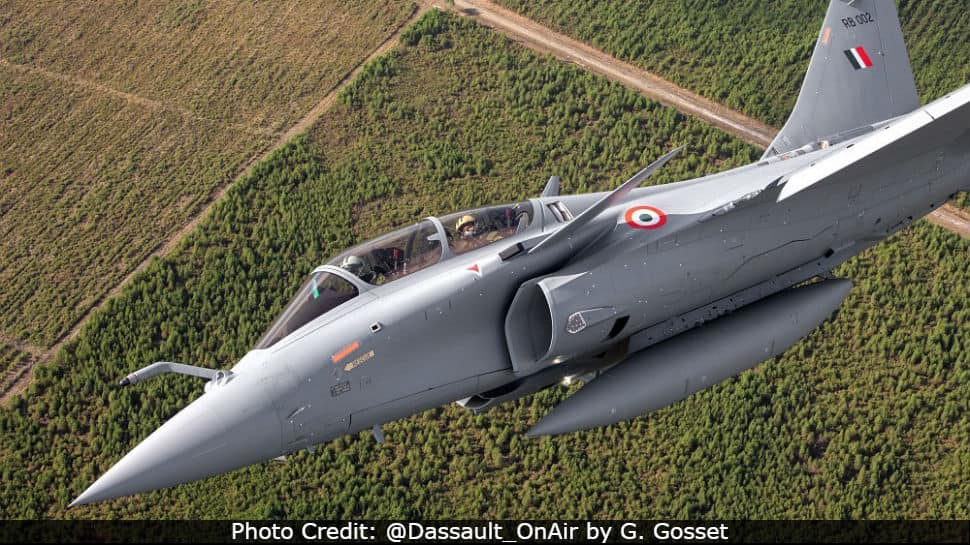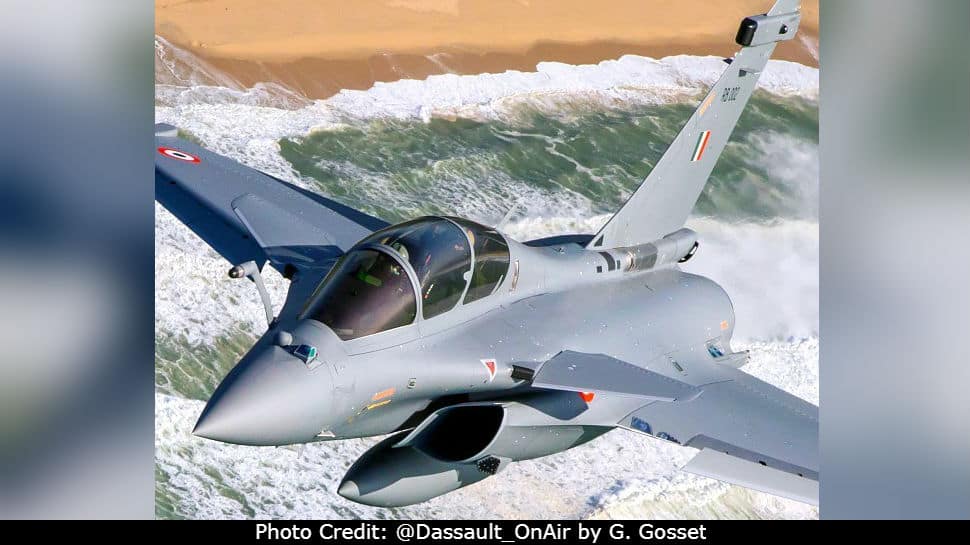ew Delhi India and China are for the first time patrolling Fish-Tail II, one of the 13 disputed areas along the Line of Actual Control (LAC) in south-east Arunachal Pradesh, in coordination with each other in an attempt to build mutual confidence and maintain peace along the border, a senior official in the security establishment said on condition of anonymity.
Fish Tail-I and II are in the easternmost corner of Arunachal Pradesh. Fish Tail -I is largely glaciated terrain, and patrols from either side are few and far between.
The proposal for “coordinated patrolling” was made by India at a high-level meeting between the Chinese People’s Liberation Army and the Indian army in June in the run-up to the informal summit between Prime Minister Narendra Modi and Chinese President Xi Jinping in Mamallapuram,Tamil Nadu, earlier this month.
The two sides met in Arunachal’s Kibuthu, one of the seven designated border personnel meeting points. The Indian side was led by the commander of theDinjang (Assam)-based 2 Mountain Division of the III Corps of the Indian Army, the senior official cited above said.
China agreed to the Indian proposal, leading to structured “coordinated patrolling” along Fish-Tail II, the first time that such an exercise has been undertaken by the two countries, the official said.
“One of the key takeaways of the 2018 Wuhan summit, which followed the 73-day-long standoff between the Chinese People’s Army and the Indian army at Doklam, was to give strategic guidance to both armies to reduce border tensions. The coordinated patrolling is a step in that direction,” a senior ministry of defence official said.
The standoff at Doklam, in the India-Bhutan-Tibet trijunction, began on June 16, 2017, when the PLA entered the area in a bid to alter the status quo in violation of Beijing’s existing understanding with both India and Bhutan. The issue was eventually resolved with the disengagement of border personnel on August 28 that year.
India had suggested “coordinated patrolling” of the border earlier too, but found no takers in Beijing.
“Coordinated patrolling would mean both sides would inform the other about their outgoing foot patrols, and the areas that the patrol is likely to go and the duration of the patrol,” a second senior official who did not want to be named said.
Patrols from either side go up the designated “claim-line” and mark their presence before returning. “Since the movements of the patrols are known in advance, there is no need for the other side to send a patrol,” a third senior official said.
Faceoffs tend to occur when patrols from either side come face to face. “When patrols come face to face, each have to challenge the other,” the third official said. Recently, Indian and Chinese troops came face to face on the disputed Pangong Tso Lake in Ladakh, leading to a scuffle, according to some reports, the defence ministry official said.
Fish-Tail -I &II are among the most remote areas along the LAC and India’s road infrastructure is extremely poor in this area. India, however, regularly sends patrols, some of which take up to a month to reach their destination. The PLA undertakes sporadic patrols in the region.
“Given the terrain, connectivity and security implications, it’s basically a low hanging fruit where coordinated patrolling can be done. And it may be a good idea and place to experiment with coordinated patrolling and used in other areas too,” the first senior official cited above said, explaining the move.
India and China have an unresolved border dispute that dates back to their 1962 war. Differences in perception over where the border lies have led to occasional tensions, with one side accusing the other of making incursions into its territory.Over the years — in 1993, 1996, 2005, 2006 and 2012 — the two counties have signed several agreements to reduce border tensions.
Separately, China has refused to stop construction in the Tibet valley along Upper Subansari district in Arunachal. The road through the Bisa area to the border doesn’t have the same security implications as the road through the Doklam plateau in Bhutan. The Border Roads Organisation (BRO), however, is about to complete a corresponding road from Tama Chung Chung (TCC) to Maja, opposite of Bisa, the third senior official said.
In response to a detailed questionnaire, the Indian army did not directly comment on “coordinated patrolling” of Fish Tail -II or on the road through Bisa to the LAC being constructed by the Chinese PLA.
But the Indian Army did underline that borders have not been “demarcated,” leading to “differing perceptions” of the border. It also said that despite the differing perception of the border, mechanisms had evolved over a period of time to ensure that “peace and tranquillity along LAC is maintained.”
Northern Army Commander Lieutenant General DS Hooda (retd), who handled several tricky India-China standoffs in the past, said, “If handled maturely and with respect for each other’s security concerns; it is a good concept. The arrangement holds the promise to negate incidences witnessed at the Pangong Tso Lake between the two armies.”
Sudhi Ranjan Sen
New Delhi India and China are for the first time patrolling Fish-Tail II, one of the 13 disputed areas along the Line of Actual Control (LAC) in south-east Arunachal Pradesh, in coordination with each other in an attempt to build mutual confidence and maintain peace along the border, a senior official in the security establishment said on condition of anonymity.
Fish Tail-I and II are in the easternmost corner of Arunachal Pradesh. Fish Tail -I is largely glaciated terrain, and patrols from either side are few and far between.
The proposal for “coordinated patrolling” was made by India at a high-level meeting between the Chinese People’s Liberation Army and the Indian army in June in the run-up to the informal summit between Prime Minister Narendra Modi and Chinese President Xi Jinping in Mamallapuram,Tamil Nadu, earlier this month.
The two sides met in Arunachal’s Kibuthu, one of the seven designated border personnel meeting points. The Indian side was led by the commander of theDinjang (Assam)-based 2 Mountain Division of the III Corps of the Indian Army, the senior official cited above said.
China agreed to the Indian proposal, leading to structured “coordinated patrolling” along Fish-Tail II, the first time that such an exercise has been undertaken by the two countries, the official said.
“One of the key takeaways of the 2018 Wuhan summit, which followed the 73-day-long standoff between the Chinese People’s Army and the Indian army at Doklam, was to give strategic guidance to both armies to reduce border tensions. The coordinated patrolling is a step in that direction,” a senior ministry of defence official said.
The standoff at Doklam, in the India-Bhutan-Tibet trijunction, began on June 16, 2017, when the PLA entered the area in a bid to alter the status quo in violation of Beijing’s existing understanding with both India and Bhutan. The issue was eventually resolved with the disengagement of border personnel on August 28 that year.
India had suggested “coordinated patrolling” of the border earlier too, but found no takers in Beijing.
“Coordinated patrolling would mean both sides would inform the other about their outgoing foot patrols, and the areas that the patrol is likely to go and the duration of the patrol,” a second senior official who did not want to be named said.
Patrols from either side go up the designated “claim-line” and mark their presence before returning. “Since the movements of the patrols are known in advance, there is no need for the other side to send a patrol,” a third senior official said.
Faceoffs tend to occur when patrols from either side come face to face. “When patrols come face to face, each have to challenge the other,” the third official said. Recently, Indian and Chinese troops came face to face on the disputed Pangong Tso Lake in Ladakh, leading to a scuffle, according to some reports, the defence ministry official said.
Fish-Tail -I &II are among the most remote areas along the LAC and India’s road infrastructure is extremely poor in this area. India, however, regularly sends patrols, some of which take up to a month to reach their destination. The PLA undertakes sporadic patrols in the region.
“Given the terrain, connectivity and security implications, it’s basically a low hanging fruit where coordinated patrolling can be done. And it may be a good idea and place to experiment with coordinated patrolling and used in other areas too,” the first senior official cited above said, explaining the move.
India and China have an unresolved border dispute that dates back to their 1962 war. Differences in perception over where the border lies have led to occasional tensions, with one side accusing the other of making incursions into its territory.Over the years — in 1993, 1996, 2005, 2006 and 2012 — the two counties have signed several agreements to reduce border tensions.
Separately, China has refused to stop construction in the Tibet valley along Upper Subansari district in Arunachal. The road through the Bisa area to the border doesn’t have the same security implications as the road through the Doklam plateau in Bhutan. The Border Roads Organisation (BRO), however, is about to complete a corresponding road from Tama Chung Chung (TCC) to Maja, opposite of Bisa, the third senior official said.
In response to a detailed questionnaire, the Indian army did not directly comment on “coordinated patrolling” of Fish Tail -II or on the road through Bisa to the LAC being constructed by the Chinese PLA.
But the Indian Army did underline that borders have not been “demarcated,” leading to “differing perceptions” of the border. It also said that despite the differing perception of the border, mechanisms had evolved over a period of time to ensure that “peace and tranquillity along LAC is maintained.”
Northern Army Commander Lieutenant General DS Hooda (retd), who handled several tricky India-China standoffs in the past, said, “If handled maturely and with respect for each other’s security concerns; it is a good concept. The arrangement holds the promise to negate incidences witnessed at the Pangong Tso Lake between the two armies.”
Sudhi Ranjan Sen
New Delhi India and China are for the first time patrolling Fish-Tail II, one of the 13 disputed areas along the Line of Actual Control (LAC) in south-east Arunachal Pradesh, in coordination with each other in an attempt to build mutual confidence and maintain peace along the border, a senior official in the security establishment said on condition of anonymity.
Fish Tail-I and II are in the easternmost corner of Arunachal Pradesh. Fish Tail -I is largely glaciated terrain, and patrols from either side are few and far between.
The proposal for “coordinated patrolling” was made by India at a high-level meeting between the Chinese People’s Liberation Army and the Indian army in June in the run-up to the informal summit between Prime Minister Narendra Modi and Chinese President Xi Jinping in Mamallapuram,Tamil Nadu, earlier this month.
The two sides met in Arunachal’s Kibuthu, one of the seven designated border personnel meeting points. The Indian side was led by the commander of theDinjang (Assam)-based 2 Mountain Division of the III Corps of the Indian Army, the senior official cited above said.
China agreed to the Indian proposal, leading to structured “coordinated patrolling” along Fish-Tail II, the first time that such an exercise has been undertaken by the two countries, the official said.
“One of the key takeaways of the 2018 Wuhan summit, which followed the 73-day-long standoff between the Chinese People’s Army and the Indian army at Doklam, was to give strategic guidance to both armies to reduce border tensions. The coordinated patrolling is a step in that direction,” a senior ministry of defence official said.
The standoff at Doklam, in the India-Bhutan-Tibet trijunction, began on June 16, 2017, when the PLA entered the area in a bid to alter the status quo in violation of Beijing’s existing understanding with both India and Bhutan. The issue was eventually resolved with the disengagement of border personnel on August 28 that year.
India had suggested “coordinated patrolling” of the border earlier too, but found no takers in Beijing.
“Coordinated patrolling would mean both sides would inform the other about their outgoing foot patrols, and the areas that the patrol is likely to go and the duration of the patrol,” a second senior official who did not want to be named said.
Patrols from either side go up the designated “claim-line” and mark their presence before returning. “Since the movements of the patrols are known in advance, there is no need for the other side to send a patrol,” a third senior official said.
Faceoffs tend to occur when patrols from either side come face to face. “When patrols come face to face, each have to challenge the other,” the third official said. Recently, Indian and Chinese troops came face to face on the disputed Pangong Tso Lake in Ladakh, leading to a scuffle, according to some reports, the defence ministry official said.
Fish-Tail -I &II are among the most remote areas along the LAC and India’s road infrastructure is extremely poor in this area. India, however, regularly sends patrols, some of which take up to a month to reach their destination. The PLA undertakes sporadic patrols in the region.
“Given the terrain, connectivity and security implications, it’s basically a low hanging fruit where coordinated patrolling can be done. And it may be a good idea and place to experiment with coordinated patrolling and used in other areas too,” the first senior official cited above said, explaining the move.
India and China have an unresolved border dispute that dates back to their 1962 war. Differences in perception over where the border lies have led to occasional tensions, with one side accusing the other of making incursions into its territory.Over the years — in 1993, 1996, 2005, 2006 and 2012 — the two counties have signed several agreements to reduce border tensions.
Separately, China has refused to stop construction in the Tibet valley along Upper Subansari district in Arunachal. The road through the Bisa area to the border doesn’t have the same security implications as the road through the Doklam plateau in Bhutan. The Border Roads Organisation (BRO), however, is about to complete a corresponding road from Tama Chung Chung (TCC) to Maja, opposite of Bisa, the third senior official said.
In response to a detailed questionnaire, the Indian army did not directly comment on “coordinated patrolling” of Fish Tail -II or on the road through Bisa to the LAC being constructed by the Chinese PLA.
But the Indian Army did underline that borders have not been “demarcated,” leading to “differing perceptions” of the border. It also said that despite the differing perception of the border, mechanisms had evolved over a period of time to ensure that “peace and tranquillity along LAC is maintained.”
Northern Army Commander Lieutenant General DS Hooda (retd), who handled several tricky India-China standoffs in the past, said, “If handled maturely and with respect for each other’s security concerns; it is a good concept. The arrangement holds the promise to negate incidences witnessed at the Pangong Tso Lake between the two armies.”
Sudhi Ranjan Sen
New Delhi India and China are for the first time patrolling Fish-Tail II, one of the 13 disputed areas along the Line of Actual Control (LAC) in south-east Arunachal Pradesh, in coordination with each other in an attempt to build mutual confidence and maintain peace along the border, a senior official in the security establishment said on condition of anonymity.
Fish Tail-I and II are in the easternmost corner of Arunachal Pradesh. Fish Tail -I is largely glaciated terrain, and patrols from either side are few and far between.
The proposal for “coordinated patrolling” was made by India at a high-level meeting between the Chinese People’s Liberation Army and the Indian army in June in the run-up to the informal summit between Prime Minister Narendra Modi and Chinese President Xi Jinping in Mamallapuram,Tamil Nadu, earlier this month.
The two sides met in Arunachal’s Kibuthu, one of the seven designated border personnel meeting points. The Indian side was led by the commander of theDinjang (Assam)-based 2 Mountain Division of the III Corps of the Indian Army, the senior official cited above said.
China agreed to the Indian proposal, leading to structured “coordinated patrolling” along Fish-Tail II, the first time that such an exercise has been undertaken by the two countries, the official said.
“One of the key takeaways of the 2018 Wuhan summit, which followed the 73-day-long standoff between the Chinese People’s Army and the Indian army at Doklam, was to give strategic guidance to both armies to reduce border tensions. The coordinated patrolling is a step in that direction,” a senior ministry of defence official said.
The standoff at Doklam, in the India-Bhutan-Tibet trijunction, began on June 16, 2017, when the PLA entered the area in a bid to alter the status quo in violation of Beijing’s existing understanding with both India and Bhutan. The issue was eventually resolved with the disengagement of border personnel on August 28 that year.
India had suggested “coordinated patrolling” of the border earlier too, but found no takers in Beijing.
“Coordinated patrolling would mean both sides would inform the other about their outgoing foot patrols, and the areas that the patrol is likely to go and the duration of the patrol,” a second senior official who did not want to be named said.
Patrols from either side go up the designated “claim-line” and mark their presence before returning. “Since the movements of the patrols are known in advance, there is no need for the other side to send a patrol,” a third senior official said.
Faceoffs tend to occur when patrols from either side come face to face. “When patrols come face to face, each have to challenge the other,” the third official said. Recently, Indian and Chinese troops came face to face on the disputed Pangong Tso Lake in Ladakh, leading to a scuffle, according to some reports, the defence ministry official said.
Fish-Tail -I &II are among the most remote areas along the LAC and India’s road infrastructure is extremely poor in this area. India, however, regularly sends patrols, some of which take up to a month to reach their destination. The PLA undertakes sporadic patrols in the region.
“Given the terrain, connectivity and security implications, it’s basically a low hanging fruit where coordinated patrolling can be done. And it may be a good idea and place to experiment with coordinated patrolling and used in other areas too,” the first senior official cited above said, explaining the move.
India and China have an unresolved border dispute that dates back to their 1962 war. Differences in perception over where the border lies have led to occasional tensions, with one side accusing the other of making incursions into its territory.Over the years — in 1993, 1996, 2005, 2006 and 2012 — the two counties have signed several agreements to reduce border tensions.
Separately, China has refused to stop construction in the Tibet valley along Upper Subansari district in Arunachal. The road through the Bisa area to the border doesn’t have the same security implications as the road through the Doklam plateau in Bhutan. The Border Roads Organisation (BRO), however, is about to complete a corresponding road from Tama Chung Chung (TCC) to Maja, opposite of Bisa, the third senior official said.
In response to a detailed questionnaire, the Indian army did not directly comment on “coordinated patrolling” of Fish Tail -II or on the road through Bisa to the LAC being constructed by the Chinese PLA.
But the Indian Army did underline that borders have not been “demarcated,” leading to “differing perceptions” of the border. It also said that despite the differing perception of the border, mechanisms had evolved over a period of time to ensure that “peace and tranquillity along LAC is maintained.”
Northern Army Commander Lieutenant General DS Hooda (retd), who handled several tricky India-China standoffs in the past, said, “If handled maturely and with respect for each other’s security concerns; it is a good concept. The arrangement holds the promise to negate incidences witnessed at the Pangong Tso Lake between the two armies.”
